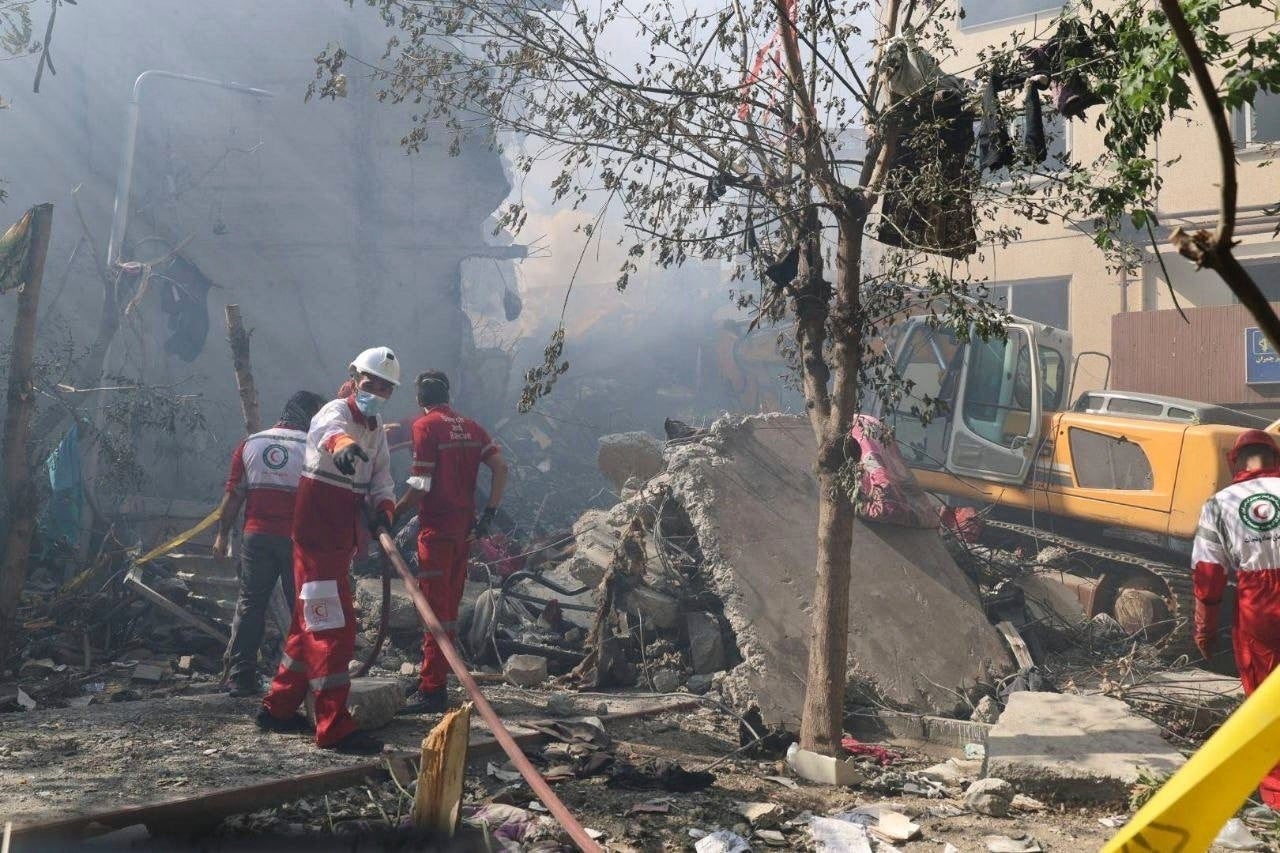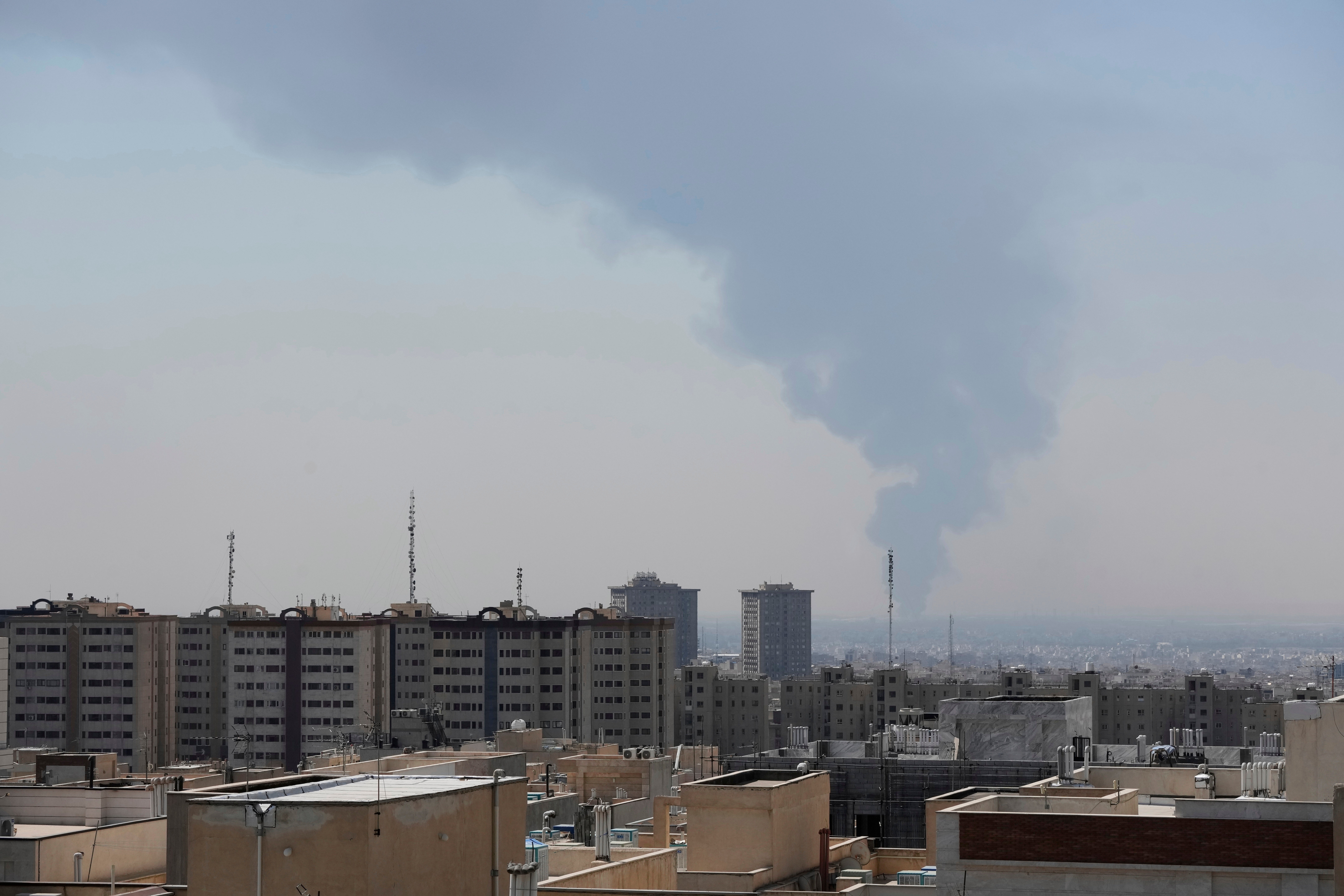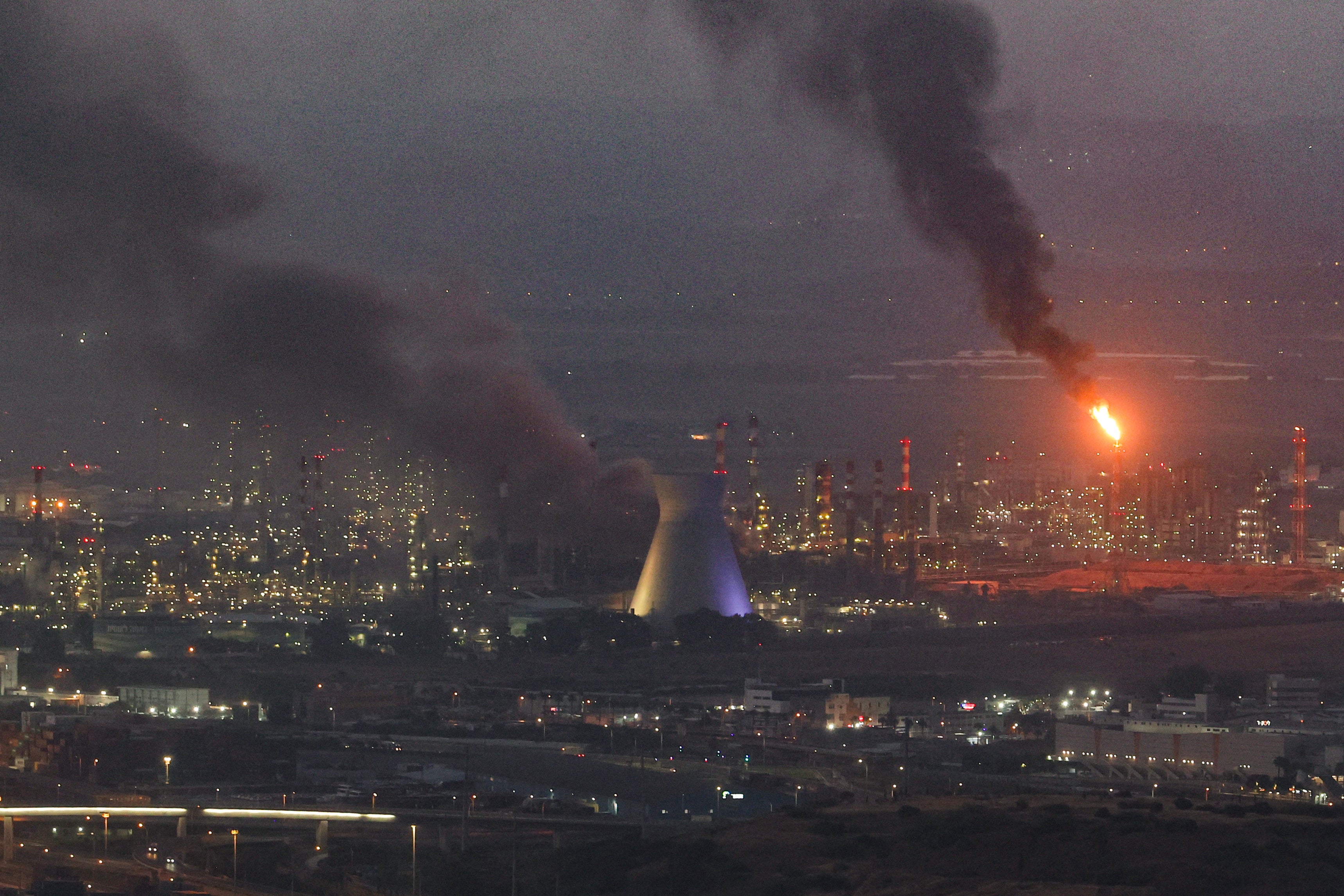Years of simmering tensions between Israel and Iran have broken into direct conflict, as the two arch foes trade missile attacks on an unprecedented scale.
Israel launched “Operation Rising Lion” earlier this month in response to intelligence it claimed showed that Iran was “approaching the point of no return” in the development of a nuclear weapon.
Calling the series of strikes on Iranian nuclear facilities, missile strikes and military commanders “a decisive moment in Israel’s history”, prime minister Benjamin Netanyahu warned that the operation would continue for as long as necessary.
Iran has labelled the attacks a declaration of war, and has responded with its own missile salvoes, with the civilian populations of both nations bearing the brunt of the conflict.
As of Thursday morning, a Washington-based human rights group estimated at least 639 Iranians have been killed by Israeli strikes, while at least 24 have been killed in Israel, according to authorities. Iran’s latest official death toll was 224 on Monday, a figure they have not updated since.
The US has now become directly involved, after President Donald Trump authorised a strike on three nuclear sites, sparking further fears of an ever-widening conflict.
Here The Independent looks at the background to the conflict and how the attacks have unfolded:
What is the history of the Israel-Iran conflict?
Israel and Iran have been engaged in shadow warfare for decades, with a long history of clandestine attacks by land, sea, air and cyberspace, which Tehran has conducted via its various proxies and allies in the region.
The two nations had been allies prior to the Islamic Revolution in 1979, which installed a new theocratic regime ideologically opposed to Israel’s existence. Israel would also come to view Tehran’s nuclear ambitions as an existential threat.

When Israel invaded Lebanon in 1982, Iran’s new regime helped to establish Hezbollah by lending the militant group funds and training. Tehran also funds Hamas in Gaza, Yemen’s Houthis, and other paramilitary groups in Iraq and Syria, according to the US State Department.
But after Hamas sparked the ongoing war in Gaza on 7 October 2023, Israel has killed much of the group’s senior leadership, while also decimating Hezbollah and striking Houthi targets over the same period, leaving Tehran significantly more isolated.
Friday, 13 June
In a major escalation, Israel announced around 200 Israeli Air Force aircraft dropped 330 munitions on around 100 targets in total overnight, hitting six cities including Tehran and Iran’s nuclear facility in Natanz.
At least 20 senior commanders were killed, two regional sources told Reuters, including the chief of staff of Iran’s armed forces, and senior leaders in the Revolutionary Guards.

Mossad operatives situated deep within Iranian territory also conducted a series of covert sabotage missions targeting the country’s air defence systems, which included building a drone base near Tehran, a security source told the Times of Israel.
Further Israeli strikes were reported on Friday, including on Iran’s military airport in Tabriz and the Shiite holy city of Qom.
Iran’s envoy to the UN said 78 people were killed and more than 320 injured – most of them civilians.
Iran responded by firing around 100 drones towards Israel. Jordan’s military said it had intercepted a number of missiles and drones that entered its airspace and which had been likely to fall in Jordanian territory, including populated areas.
A later salvo of Iranian missiles lit up the sky over Tel Aviv on Friday evening. Israel said fewer than 100 missiles were launched, and said most were intercepted or failed to reach their targets.
Saturday, 14 June
Attacks continued on Saturday, with Israel warning that three people had died and more than 50 left injured across several cities.
Warning Israel’s allies not to shoot down missiles on its behalf, Iran also suggested the conflict would spread to US bases in the region.
State news agency Fars said two projectiles had hit Tehran’s Mehrabad airport. Israeli strikes were also reported in around 10 locations in the East Azerbaijan province. Authorities would later report that 60 people had been killed when a 14-storey apartment block was flattened in Tehran.
Overnight on Saturday, Israel targeted Iran’s defence ministry headquarters in Tehran, while footage showed a blaze raging at the nearby Shahran oil depot.
Around a million people were forced into air raid shelters as sirens were heard in Tel Aviv and Jerusalem. Nearly 200 were wounded and six killed in a strike on an eight-storey building in Bat Yam, a city south of Tel Aviv, officials said. Four civilians were also reported dead in the predominantly Palestinian town of Tamra.

Sunday, 15 June
As the conflict entered its third day, explosions rocked Tel Aviv on Sunday afternoon, before a second wave of Iranian strikes hit the port city of Haifa, with the coastal city of Bat Yam also attacked.
The Houthis announced that they had targeted the central Israeli city of Jaffa with ballistic missiles in the past 24 hours, marking the first time an ally of Iran had joined the fray, with Hezbollah having indicated on Friday they did not plan to attack Israel.
Israel, meanwhile, extended its targets beyond military installations to also hit oil refineries and government buildings.
A round of nuclear negotiations between Iran and the US, planned for Sunday, was scrapped after Tehran said it would not negotiate while under Israeli attack.
Monday, 16 June
Iranian missiles struck Tel Aviv and the port city of Haifa shortly before dawn on Monday, killing at least eight people and wounding more than 100 others, while destroying homes and causing damage to the US Embassy.
Iran’s Revolutionary Guards claimed the latest attack employed a new method that caused Israel’s multi-layered defence systems to target each other and allowed Tehran to successfully hit many targets, without providing further details.
But Israel insisted just seven out of fewer than 100 missiles fired by Iran overnight had landed in Israel. Israel’s military also claimed to have achieved aerial superiority over Iran and to have destroyed more than a third of Iran’s surface-to-surface missile launchers.
Iran also announced that dozens of alleged saboteurs and “spies” linked to Israel had been arrested since the start of the conflict.
With no sign of an end to the fighting, the risk of further escalation loomed over a meeting of G7 leaders in Canada. Sir Keir Starmer said the summit would provide an opportunity for allies to make the case for de-escalation in the “fast-moving” situation in the Middle East.
Tuesday, 17 June
Israel’s military said on Tuesday that it killed Iran’s wartime chief of staff Ali Shadmani just four days after he was appointed.
The IDF carried out extensive strikes on Iranian military targets including weapons storage sites and missile launchers.
Separately, three people were killed and four injured in Iran’s central city of Kashan in an Israeli attack, Iran’s Nournews reported.
Meanwhile, Iran’s Revolutionary Guards said they had hit Israel’s Military Intelligence Directorate and spy agency Mossad’s operational centre. Israel did not comment on the attacks.
Israel said that Iran had fired 30 missiles at the country early on Tuesday morning.

Wednesday, 18 June
The Israeli military said it attacked the Khojir missile production facility near the capital of Tehran – the same site it targeted in October. It claimed to strike a centrifuge production site alongside several other weapons production strikes in overnight attacks across Iran.
It also targeted the Imam Hossein University linked to Iran’s Revolutionary Guards, Iranian media reported. Thousands fled Tehran as Israeli warplanes bombed the capital overnight.
“At the Tehran site, one building was hit where advanced centrifuge rotors were manufactured and tested. At Karaj, two buildings were destroyed where different centrifuge components were manufactured,” the International Atomic Energy Agency said on X.
Two barrages of Iranian missiles were launched toward Israel in the first two hours of Wednesday morning. Explosions were heard over Tel Aviv, the Israeli military said.
A human rights group said Israel’s strikes on Iran had killed at least 585 people across Iran and wounded 1,326 others. Iran had not updated its death toll since Monday, when it said 224 had been killed.
Thursday 19 June
Israel struck dozens of sites, including Natanz and a heavy water nuclear reactor, originally called Arak and now called Khondab.
An Iranian missile hit the Soroka Hospital in Be’er Sheba, in southern Israel, leaving dozens injured. Benjamin Netanyahu warned Tehran would pay a “heavy price” for the strike.
Citing anonymous sources, Bloomberg News reported that senior US officials are “preparing for the possibility of a strike on Iran in the coming days”.
Friday 20 June
Israel and Iran continued to trade strikes. Israel said it killed a squad of Iranian soldiers including an IRGC commander.
Israel Katz, Israel’s defence minister, said he told the military to intensify attacks on “symbols of the regime” in the Iranian capital of Tehran, in an attempt to destabilise the regime.
Iran continued its retaliatory fire.
Saturday 21 June
Israel says it killed three senior commanders of the Islamic Revolutionary Guard Corps (IRGC), including two people it alleges were linked to arming Palestinian militants Hamas.
A 16-year-old was killed when Israeli aircraft struck a residential building in Qom, Iranian authorities said.
An end to the conflict appeared no closer, as the Israeli military’s chief spokesperson said the army had been told to prepare for a “prolonged campaign” to destroy Iranian targets.
Then, late in the day Donald Trump announced US bombers had directly attacked three Iranian nuclear sites, claiming to have “obliterated” Tehran’s nuclear capabilities.
Sunday 22 June
US defence secretary Pete Hegseth denied suggestions that Washington’s involvement in Iran is about regime change, stating instead that it was about wiping out Iran’s nuclear programme.
Giving more details about the attack – dubbed Operation Midnight Hammer, he said Fordow, Natanz and Esfahan sites had been struck in what he called an “incredible and overwhelming success”.
Tehran responded furiously to the attack. Foreign minister Abbas Araghchi said the US had crossed a “very big red line” and accused the Trump administration of having “betrayed” the nuclear negotiations. He announced that he will meet Russian president Vladimir Putin later that day.
Israel said it has continued to carry out strikes across Iran.
Why has Israel attacked now?
Having long harboured ambitions to dismantle Iran’s nuclear capabilities, Israel has claimed new intelligence showed Tehran was “approaching the point of no return” in developing a nuclear weapon.
But a source familiar with US intelligence reports said there had been no recent change in Washington’s assessment that Iran was not building a nuclear weapon and that Ayatollah Ali Khamenei had not authorised a resumption of the weapons programme shut in 2003.
It came after the UN’s nuclear watchdog, the International Atomic Energy Agency, declared Iran to be in breach of its non-proliferation obligations for the first time in nearly two decades, having warned that Tehran had enough uranium enriched to near-weapons grade to make nine nuclear bombs.
While Iran insists its nuclear programme is intended merely for energy purposes, Tehran’s leadership has repeatedly called Israel a “cancer” in the Middle East.
Tensions between the two foes also broke into direct conflict last year, with Iran firing hundreds of missiles and drones in its first ever direct attack on Israel in April 2024, in retaliation for an attack on its embassy compound in Damascus, which killed several senior Iranian military commanders.
Additional reporting by agencies


